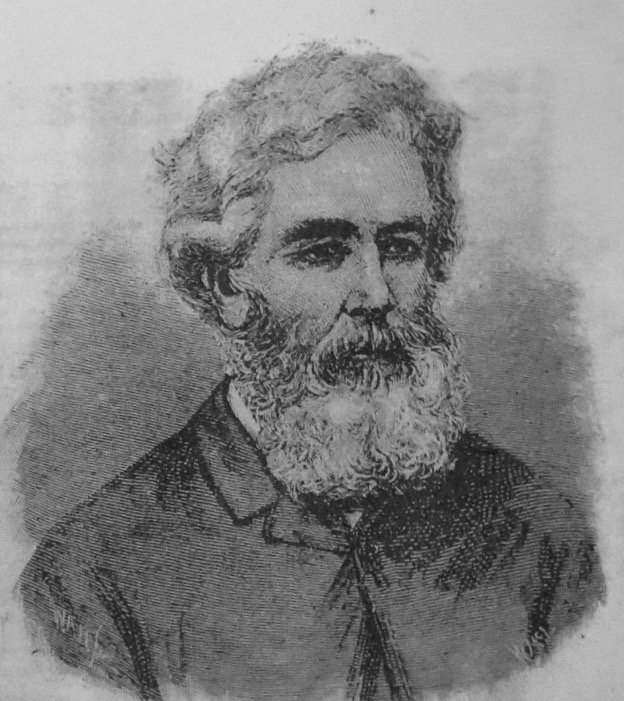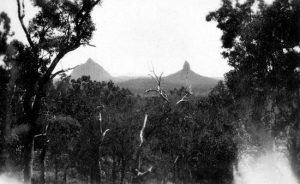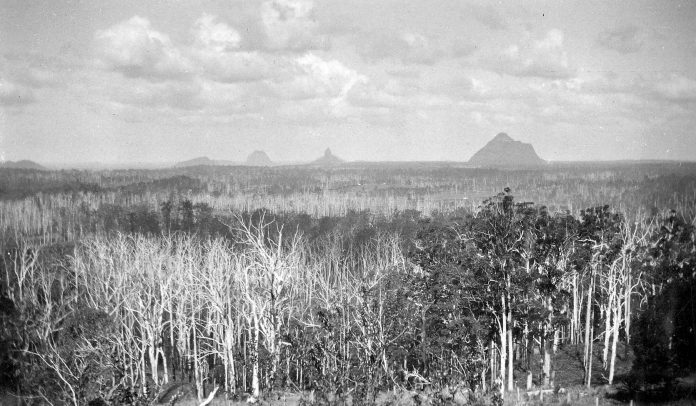For 50 years before the first settlers arrived, white men were travelling the native tracks through the scrubs and forests of the Sunshine Coast hinterland.
Convicts are known to have escaped from the Moreton Bay penal settlement (Brisbane) and fled northward from as early as 1823.
Moreton Bay had been founded as a place of secondary punishment for the hardened criminals and repeat offenders, so it wasn’t long before enterprising souls made a run for it.
Several lived with the Kabi Kabi until they were recaptured or voluntarily returned to captivity.
In November 1823, convict timbergetters Pamphlet, Finnegan and Parsons crossed the Mooloolah River at low tide and then walked up the Maroochy River for two days before turning north to Noosa.
John Graham “Moilo” escaped in 1827 and lived at Tewantin and the Maroochy River until 1833.
James Davis “Durramboi” lived with the Aborigines in Maroochy for 13 years after his escape in 1829.
Love history? So do we. Help keep more Coast memories alive by subscribing to our free daily news feed. Go to Subscribe at the top of this story and add your name and email. It’s that simple.
Sam Derrington lived in Maroochy from 1831-36, while on the Blackall Range, escapee John Fahey “Gilberri” lived with the land’s original owners for 11 years until his recapture in 1854.
David Bracewell (sometimes Bracefell or Bracefield) lived with the natives of Noosa after absconding from the oppressive rule of Captain Patrick Logan shortly after the strict and punitive commandant’s arrival in the Moreton Bay settlement in 1826.
He was known as Wandi and picked up the local aboriginal language.
The next white men to set foot in the coastal region of Noosa was an exploration party sent by Governor Gipps, consisting of Andrew Petrie, Joliffe, Stewart-Russell and Wattersley.

Accompanied by the local Aborigines who assisted their landing, they arrived in Noosa Heads by boat.
In 1842, Bracefell was discovered by Petrie who, with much difficulty, persuaded him to embark with his party when they left the area, to return to Brisbane.
On May 5, 1842, Petrie and his companions reached what Petrie named in some accounts, Bracefield Cape and in others, Bracefell Heads. This, according to one account was re-named Noosa Heads on account of prejudice against convicts.
Earlier, in 1838, Petrie, his son John, two convicts and two native guides had first ventured through the north coast area to the Maroochy River in search of gold.
They took timber specimens, including bunya pine from the ranges and in the early 1840s, after trips to the Maroochy River and Glasshouse Mountains, reported the discovery of several new pine species.
 Most impressive was the bunya pine which Petrie named Araucaria petriana after himself. It was later renamed Araucaria bidwillii.
Most impressive was the bunya pine which Petrie named Araucaria petriana after himself. It was later renamed Araucaria bidwillii.
Petrie’s “laborious quest for bunya roots took place in the forests between Caboolture and Maroochydore”.
On the basis of pioneering excursions, undertaken during 1839-1841, Petrie made a convincing claim to have been “the first white person who risked his life with others in procuring the first plants of this tree”.
Bunyas never grew along the lower Brisbane River, so it appears that the seeds of the bunya trees carried back from the Sunshine Coast hinterland grew into the six giant bunya trees that still stand tall in the City Botanic Gardens.
Petrie influenced Governor Gipps to declare an Aboriginal reserve, the Bunya Proclamation, on the north coast in 1842.
This meant no timber licences were granted and settlement of bunya territory, the ranges “to the north of Moreton Bay” was prohibited.
In 1846, another Petrie son, 15-year-old Tom, went with 200 Aborigines of the Brisbane area to the Bunya Feast in Baroon Pocket. They showed him where his father had travelled through thick vine scrub and camped between Dulong and Razorback.
Ludwig Leichardt, the botanist and explorer, also explored the “Bonyi Bonyi” Mountains, now the Blackall Range, in December 1843-44.
With an expanding population after Queensland became a separate colony in 1859, the Unoccupied Crown Lands occupation Act of 1860 was one of the first to be passed by Queensland Parliament.
It repealed Governor Gipps’ 1842 Bunya Proclamation and provided for licences for squatters and timbergetters.
And as reports of good quality cedar filtered back to Brisbane, the timbergetters arrived, looking for cedar, “red gold”.
This flashback is brought to you by veteran Sunshine Coast journalist and history writer Dot Whittington, also the editor of Your Time Magazine.





